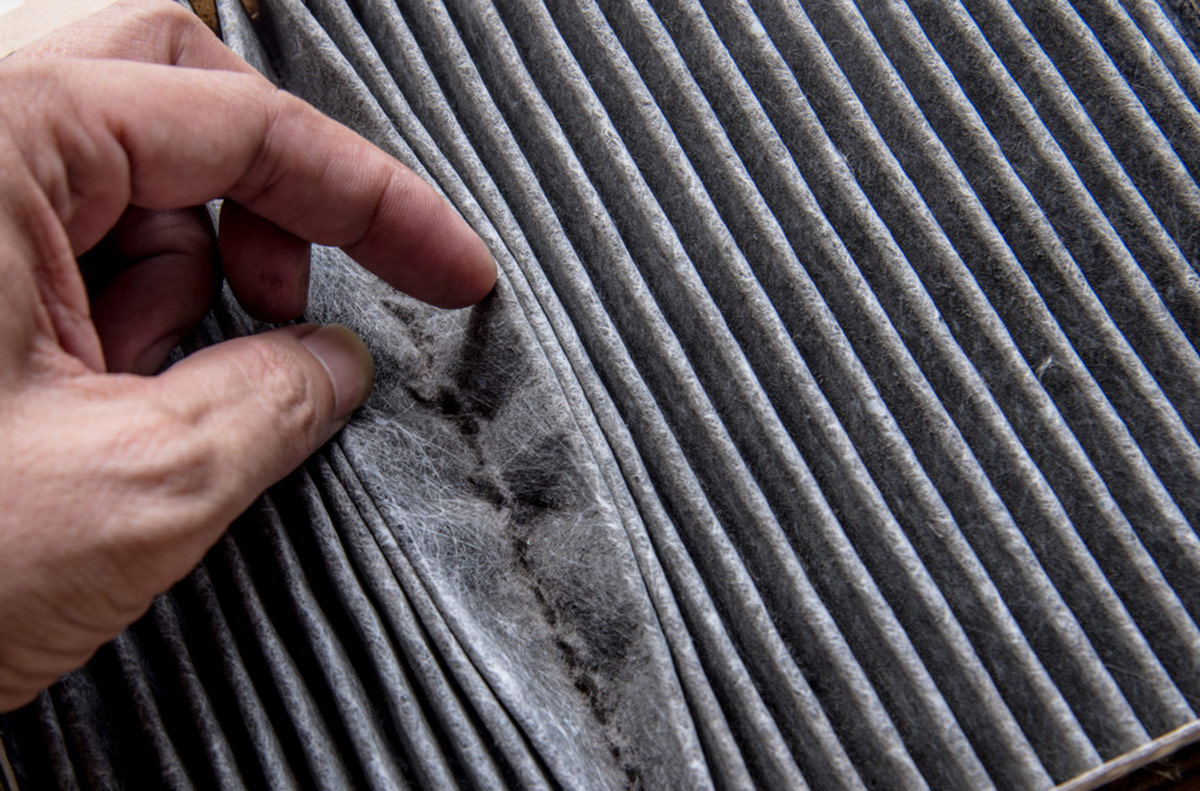

Articles
How To Tell If HVAC Filter Is Dirty
Modified: February 27, 2024
Learn how to determine if your HVAC filter is dirty with these helpful articles. Keep your air clean and improve your system's efficiency.
(Many of the links in this article redirect to a specific reviewed product. Your purchase of these products through affiliate links helps to generate commission for Storables.com, at no extra cost. Learn more)
Introduction
Welcome to the world of HVAC filters! Have you ever wondered about the air quality inside your home or office? Well, your HVAC (Heating, Ventilation, and Air Conditioning) system plays a crucial role in determining the air quality you breathe. And at the heart of this system lies the HVAC filter.
The HVAC filter is responsible for trapping dust, dirt, pollen, pet dander, and other airborne particles before they circulate through your home. It plays a vital role in maintaining a clean and healthy indoor environment. However, over time, these filters can become dirty and clogged, impairing their performance and compromising the air quality.
So, how can you tell if your HVAC filter is dirty? In this article, we will explore the signs that indicate a dirty HVAC filter and discuss the importance of regular maintenance.
Key Takeaways:
- Regularly checking and replacing your HVAC filter is crucial for maintaining clean air, reducing energy costs, and preventing allergy symptoms. Visual inspections and airflow tests help identify when your filter needs attention.
- A dirty HVAC filter can lead to decreased airflow, increased energy costs, poor indoor air quality, allergy symptoms, and strange odors. By following manufacturer recommendations and conducting regular inspections, you can ensure a healthy and efficient HVAC system.
Read more: How To Clean HVAC Filter
Importance of a Clean HVAC Filter
Keeping your HVAC filter clean is crucial for several reasons:
- Improved Air Quality: A clean HVAC filter effectively traps dust, pollen, pet dander, and other allergens, preventing them from circulating in your home. This helps to improve the indoor air quality, making it healthier and safer for you and your family.
- Efficient Airflow: A clean filter allows for better airflow in your HVAC system. When the filter is clogged, the system has to work harder to push air through, resulting in reduced efficiency and increased energy consumption.
- Lower Energy Costs: When your HVAC system has to work harder due to a dirty filter, it consumes more energy. By regularly cleaning or replacing your filter, you can help reduce your energy bills and save money in the long run.
- Extended System Lifespan: A clean filter helps to prevent dust and debris from accumulating on the internal components of your HVAC system. This reduces the strain on the system, resulting in a longer lifespan and fewer costly repairs.
Regularly cleaning or replacing your HVAC filter is a simple yet effective way to maintain a healthy and efficient HVAC system. But how can you tell if your filter is dirty and in need of maintenance? Let’s explore the signs to look out for.
Signs of a Dirty HVAC Filter
Spotting the signs of a dirty HVAC filter is essential for maintaining the performance of your system. Here are some common signs to look out for:
- Decreased Airflow: A clogged filter restricts the airflow in your HVAC system. You may notice reduced airflow from the vents, making it harder to cool or heat your space. Rooms may feel stuffy or uncomfortable.
- Increased Energy Costs: When the HVAC filter is dirty, the system has to work harder to push air through. This increased workload results in higher energy consumption and, subsequently, higher energy bills.
- Poor Indoor Air Quality: If you notice more dust particles in the air or excessive dust settling on surfaces, it could be a sign of a dirty filter. A dirty filter fails to capture and trap dust and allergens effectively, leading to poor indoor air quality.
- Allergy Symptoms: If you or your family members experience an increase in allergy symptoms, such as sneezing, coughing, or itchy eyes, it could be due to a dirty HVAC filter. Pollen, pet dander, and other allergens can circulate freely when the filter is clogged.
- Strange Odors: A dirty filter can produce unpleasant odors as dust and debris build up. If you detect a musty or stale smell whenever your HVAC system is running, it’s likely a sign that the filter needs attention.
These signs are indicative of a dirty HVAC filter and should not be ignored. Regularly checking and maintaining your filter ensures the optimal performance of your system and promotes a healthier indoor environment. But how can you check if your HVAC filter is dirty? Let’s find out.
Decreased Airflow
If you’ve noticed that the airflow in your home or office has significantly decreased, it could be a clear indication of a dirty HVAC filter. A clogged filter impedes the smooth flow of air through your system, causing reduced airflow from the vents.
One way to determine if your airflow is compromised is to check the airflow from your vents. Place your hand near the vent and feel the strength of the airflow. If you notice weak or minimal airflow, it’s likely that your HVAC filter needs attention.
Decreased airflow can lead to several issues:
- Inadequate Heating or Cooling: When airflow is restricted, your HVAC system’s ability to heat or cool your space is compromised. You may find that your rooms are not reaching the desired temperature, making your home uncomfortable.
- Uneven Temperature Distribution: A dirty filter can cause uneven airflow throughout your home, resulting in temperature inconsistencies. Some rooms may be cooler or warmer than others, leading to discomfort and the need to adjust your thermostat frequently.
- Overworked HVAC System: When the airflow is restricted, your HVAC system has to work harder to push air through, putting unnecessary strain on the system. This increased workload reduces the overall efficiency of your HVAC system and can lead to premature wear and tear.
If you notice any of these signs, it’s crucial to inspect and clean or replace your HVAC filter. Regularly maintaining your filter will help ensure optimal airflow and prevent further issues with your HVAC system.
Increased Energy Costs
Have you noticed a significant increase in your energy bills? A dirty HVAC filter could be a contributing factor. When your filter becomes clogged with dirt, dust, and debris, it hampers the airflow within your HVAC system. This restriction forces your system to work harder to maintain the desired temperature, resulting in increased energy consumption.
The following are some ways a dirty HVAC filter can impact your energy costs:
- Inefficient Heating and Cooling: A dirty filter impedes the airflow, making it harder for your HVAC system to move air effectively. This means it takes longer for your system to cool or heat your space to the set temperature. As a result, your system runs for longer periods, consuming more energy in the process.
- Higher Fan Speed: When the airflow is restricted due to a dirty filter, your HVAC system may compensate by operating at a higher fan speed. This increased fan speed consumes more energy, leading to higher energy bills.
- Ineffective Temperature Regulation: A clogged filter can also impair the accuracy of your thermostat’s temperature readings, causing your HVAC system to run longer than necessary. This constant running of the system results in additional energy usage and increased costs.
Regularly cleaning or replacing your HVAC filter is a cost-effective way to improve energy efficiency. By ensuring a clean filter, you allow for proper airflow, reducing the workload on your HVAC system and ultimately lowering your energy consumption.
It’s important to note that other factors, such as the age and efficiency of your HVAC system, insulation, and the climate you live in, can also impact your energy costs. However, maintaining a clean HVAC filter can still play a significant role in keeping your energy bills in check.
Read more: How To Tell If HVAC Damper Is Open Or Closed
Poor Indoor Air Quality
A clean HVAC filter is essential for maintaining good indoor air quality. When the filter becomes dirty and clogged, it fails to effectively capture and trap dust, pollen, pet dander, and other airborne contaminants. As a result, your indoor air quality can suffer, leading to potential health problems and discomfort.
Here are some ways a dirty HVAC filter can contribute to poor indoor air quality:
- Increased Dust and Allergens: A dirty filter allows dust particles and allergens to circulate freely in your home or office. This can lead to an accumulation of dust on surfaces, making your space feel constantly dusty. Additionally, without a clean filter to capture allergens, individuals with allergies or respiratory conditions may experience increased symptoms.
- Reduced Ventilation: A clogged filter restricts the airflow in your HVAC system, reducing ventilation. Poor ventilation can result in stale air, unpleasant odors, and a stuffy atmosphere. It can also lead to the accumulation of airborne pollutants, such as volatile organic compounds (VOCs), which can be harmful to your health.
- Potential Mold Growth: Moisture and humidity can become trapped in a dirty HVAC filter. This creates a favorable environment for mold growth, which can further degrade your indoor air quality and pose health risks. Mold spores can be released into the air, leading to respiratory issues and allergic reactions.
It’s important to prioritize clean air in your indoor environment. Regularly inspecting and maintaining your HVAC filter will help promote better indoor air quality, reducing the presence of dust, allergens, and other contaminants.
To further improve air quality, consider investing in high-quality air purifiers or using additional filtration systems in conjunction with a clean HVAC filter. These measures can help create a healthier and more comfortable living or working space for you and your family.
Allergy Symptoms
If you or your family members suffer from allergies, a dirty HVAC filter could significantly worsen your symptoms. When the filter becomes clogged with dust, pollen, pet dander, and other allergens, it fails to effectively remove them from the air. As a result, these allergens can circulate freely in your home or office, triggering allergic reactions and causing discomfort.
Here are some common allergy symptoms that may indicate a dirty HVAC filter:
- Sneezing and Runny Nose: If you find yourself sneezing frequently or experiencing a runny or congested nose while indoors, it could be a sign of allergens circulating in the air due to a dirty filter.
- Coughing and Wheezing: Allergens present in the air, such as pollen or pet dander, can irritate your respiratory system and trigger coughing or wheezing. If these symptoms worsen when your HVAC system is running, it may be time to check your filter.
- Itchy or Watery Eyes: Allergens can cause eye irritation, leading to redness, itching, and excessive tearing. If your eyes feel irritated or you notice these symptoms worsening when indoors, a dirty filter could be a contributing factor.
- Increased Asthma Attacks: People with asthma are particularly susceptible to the effects of dirty HVAC filters. Allergens circulating in the air can trigger asthma symptoms, including coughing, shortness of breath, and chest tightness.
Regularly cleaning or replacing your HVAC filter is crucial for reducing allergens and alleviating allergy symptoms. Clean filters help trap allergens, preventing them from circulating in the air and causing discomfort. Additionally, consider using allergen-reducing air filters specifically designed to capture and remove allergens from the air.
If you or a family member experience persistent or severe allergy symptoms, it’s recommended to consult with a healthcare professional for proper diagnosis and management of your allergies.
Check the color of the filter. A dirty filter will appear gray or brown from the accumulated dust and debris. Hold it up to the light to see if any light can pass through. If not, it’s time to replace it.
Strange Odors
Have you noticed any unusual or unpleasant odors lingering in your home or office? A dirty HVAC filter could be the culprit. Over time, dust, dirt, and other debris build up on the filter, creating a breeding ground for bacteria, mold, and other pollutants. These can generate strange or musty odors that are released into your space when the HVAC system is running.
Here are some signs that indicate your HVAC filter might be causing strange odors:
- Musty or Stale Odors: If you detect a musty or stale smell when your HVAC system is operating, it could be a sign of mold growth on the filter. Mold spores thrive in moist environments, and a dirty filter can provide the ideal conditions for their development.
- Burning or Electrical Smells: A dirty HVAC filter, especially if it’s extremely clogged, can cause the HVAC system’s motor to work harder and overheat. This can result in burning or electrical odors, indicating a potential issue that needs attention.
- Smells of Dust or Dirt: When a filter becomes dirty and clogged, it can release accumulated dust and dirt particles into the air as the HVAC system operates. This can cause your space to have a distinct smell of dust or dirt.
If you notice any strange odors, it’s essential to investigate and address the issue promptly. Start by checking and cleaning or replacing your HVAC filter. In some cases, a thorough cleaning of the ductwork may also be necessary to eliminate any lingering odors and improve the overall air quality.
Regular maintenance of your HVAC system, including frequent filter replacements, can help prevent strange odors from developing and ensure a fresh and clean-smelling indoor environment.
How to Check if Your HVAC Filter is Dirty
Regularly checking your HVAC filter is crucial for ensuring its cleanliness and performance. Here are a few simple methods to determine if your filter is dirty:
- Visual Inspection: Start by visually inspecting your HVAC filter. Remove the access panel or grille that covers the filter compartment. Take a close look at the filter and assess its condition. A dirty filter will appear clogged with dust, dirt, and debris. If you can visibly see a buildup of particles on the filter, it is likely in need of cleaning or replacement.
- Airflow Test: Another way to check if your HVAC filter is dirty is by performing an airflow test. Switch on your HVAC system and feel the air coming from the vents. Place your hand a few inches away from the vent and assess the strength of the airflow. If the airflow feels weak or minimal, it’s a clear indication of a dirty or clogged filter.
- Filter Age and Usage: If you can’t visually see any dirt or debris on the filter and the airflow seems fine, the age and usage of the filter can help determine if it needs attention. Most HVAC filters are designed to be replaced every 1-3 months, depending on factors like the filter type and household conditions. If it has been longer than recommended or if the filter has been subjected to high levels of pollutants, it’s best to err on the side of caution and replace it.
It’s important to consult your HVAC system’s user manual or contact a professional if you are unsure about the specific filter replacement guidelines for your system.
By regularly checking your HVAC filter using these methods, you can determine when it requires cleaning or replacement. Establishing a routine maintenance schedule for your filter will help optimize the performance of your HVAC system and ensure clean and healthy indoor air quality.
Read more: How Much Are HVAC Filters
Visual Inspection
One of the simplest and most effective ways to check if your HVAC filter is dirty is through a visual inspection. By visually examining the filter, you can assess its condition and determine if it needs cleaning or replacement.
To perform a visual inspection of your HVAC filter, follow these steps:
- Locate the Filter Compartment: Depending on the type of HVAC system you have, the filter compartment can be found in the air handler unit, furnace, or return air duct. Typically, it is located near the blower motor or where the air enters the HVAC system. Refer to your system’s user manual if you’re unsure about the exact location.
- Turn Off the HVAC System: Before inspecting the filter, it’s important to turn off the HVAC system. This will ensure your safety and prevent any debris from being circulated.
- Remove the Access Panel or Grille: Use a screwdriver or follow the manufacturer’s instructions to remove the access panel or grille that covers the filter compartment. Set it aside in a safe place for reinstallation later.
- Inspect the Filter: Carefully pull out the filter from its housing and examine it closely. Look for visible signs of dirt, dust, debris, or discoloration. A dirty filter will appear clogged and may have a thick layer of particles accumulated on its surface.
- Assess Filter Condition: Determine the overall condition of the filter. If it is heavily clogged, damaged, or shows signs of wear and tear, it’s time for a cleaning or replacement.
Remember, different types of HVAC filters have varying lifespans and cleaning requirements. Some filters are disposable and need to be replaced, while others are washable and can be cleaned. Refer to the manufacturer’s instructions or consult with an HVAC professional to determine the appropriate cleaning or replacement method for your specific filter.
Performing regular visual inspections of your HVAC filter is a proactive approach to maintaining a clean and efficient system. By addressing a dirty filter promptly, you can prevent potential issues and ensure the delivery of clean, healthy air throughout your home or office.
Airflow Test
Conducting an airflow test is a practical and straightforward way to determine if your HVAC filter is dirty. By evaluating the strength and quality of the air coming from your vents, you can assess the condition of the filter and take appropriate action.
Follow these steps to perform an airflow test to check if your HVAC filter is dirty:
- Ensure Proper Working Conditions: Before conducting the airflow test, make sure your HVAC system is turned on and running at its normal operating mode.
- Locate the Supply Air Vents: Identify the supply air vents in your home or office. These are the vents that blow conditioned air into your living or working space.
- Position Your Hand Near the Vent: Stand in front of one of the supply air vents and place your hand about six inches away from the vent. Feel the airflow coming from the vent and assess its strength and consistency.
- Observe the Airflow: Note the strength and quality of the airflow. If you feel weak or minimal airflow, it may indicate that your HVAC filter is dirty and obstructing the proper flow of air. On the other hand, if you experience strong and robust airflow, it suggests that your filter is clean and allowing for efficient air circulation.
Regular airflow tests can help you detect any issues with your HVAC filter before they escalate. If you notice weakened airflow, it is advisable to inspect and clean or replace your filter accordingly. Cleaning or replacing a dirty filter will restore proper airflow and optimize the performance of your HVAC system.
Keep in mind that airflow can also be affected by other factors, such as duct obstructions or system malfunctions. If you are unsure about the cause of poor airflow, it’s best to consult with an HVAC professional for a thorough inspection and accurate diagnosis.
Filter Age and Usage
Understanding the age and usage of your HVAC filter is essential in determining whether it needs attention or replacement. Different filters have varying lifespans and recommendations for maintenance, making it crucial to be aware of the specific guidelines for your particular filter type.
Here are some factors to consider regarding filter age and usage:
- Filter Lifespan: Most HVAC filters are designed to be replaced regularly. The frequency of replacement depends on several factors, including the type and quality of the filter, as well as the specific conditions in your home or office. Low-quality filters typically need replacement every 1-2 months, while higher-quality filters can last up to 3 months or longer.
- Manufacturer’s Recommendations: Consult the manufacturer’s guidelines or the filter’s packaging for specific instructions on how long the filter should be used before replacement is necessary. These recommendations provide valuable information and ensure optimal filter performance.
- Household Conditions: The conditions of your living or working environment can impact filter lifespan. Factors such as the presence of pets, smokers, or high levels of airborne contaminants can result in a dirtier filter that needs more frequent checking and replacement.
- Regular Inspection: It’s important to consistently inspect your filter to assess its condition, regardless of its recommended lifespan. Even if a filter is designed to last for several months, it may still become dirty and require attention sooner due to excessive dirt or debris accumulation.
Keep in mind that some filters are washable or reusable. These filters require regular cleaning and maintenance instead of immediate replacement. However, it’s important to follow the manufacturer’s instructions closely to ensure you are properly cleaning and maintaining the filter.
By staying aware of the age and usage of your HVAC filter, you can foresee when it is likely to become dirty and plan for its maintenance or replacement accordingly. Regularly checking your filter and addressing it based on age, usage, and visual inspection will help ensure the optimal performance of your HVAC system and maintain good indoor air quality.
How Often to Replace Your HVAC Filter
Determining the appropriate frequency for replacing your HVAC filter is essential to maintain the cleanliness and efficiency of your system. While filter replacement guidelines can vary depending on factors such as filter type, household conditions, and manufacturer recommendations, there are some general guidelines to follow:
- Disposable Filters: Most disposable HVAC filters need to be replaced every 1-3 months. This timeframe is a good starting point, but the actual replacement interval may vary based on usage and environmental factors.
- Higher-Quality Filters: If you are using a higher-quality filter, such as a HEPA (High-Efficiency Particulate Air) filter or an electrostatic filter, it may have a longer lifespan. These filters are designed to capture smaller particles and may last up to 6 months or longer. Check the manufacturer’s recommendations for specific guidance.
- Household Conditions: Consider the conditions in your home or office. If you have pets, live in an area with high pollen or dust levels, or have smokers in the vicinity, your filter will likely become dirty more quickly. In such cases, replacing the filter more frequently, such as every 1-2 months, may be necessary to maintain optimal air quality and system performance.
- Visual Inspection and Airflow Test: Regularly visually inspecting your filter and conducting an airflow test can provide valuable insights into its condition. If the filter appears heavily clogged or if the airflow test reveals weak airflow, it’s a clear indication that the filter needs immediate cleaning or replacement, even if it has not reached the recommended replacement interval yet.
It’s important to note that these guidelines are general recommendations. Refer to your HVAC system’s user manual or consult with an HVAC professional for the manufacturer’s specific recommendations for your particular system and filter type.
Remember, maintaining a clean and efficient HVAC filter is crucial for optimal system performance, energy efficiency, and indoor air quality. By replacing your filter regularly and adjusting the replacement frequency based on visual inspection and airflow tests, you can ensure that your HVAC system operates effectively and provides you with clean, healthy air.
Read more: How To Measure HVAC Filter
Conclusion
Regularly checking and maintaining your HVAC filter is vital for ensuring clean air, improving energy efficiency, and maximizing the lifespan of your HVAC system. A dirty filter can lead to decreased airflow, increased energy costs, poor indoor air quality, allergy symptoms, and strange odors. By being aware of the signs and symptoms of a dirty filter, you can take proactive measures to address the issue.
Performing visual inspections, conducting airflow tests, and considering the age and usage of your filter are simple yet effective ways to determine if it needs cleaning or replacement. A clean HVAC filter enhances the quality of your indoor air, improves the efficiency of your system, and reduces the risk of allergies and respiratory issues.
Follow the manufacturer’s recommendations for filter replacement intervals, but also be mindful of your household conditions and conduct regular inspections. Filters with higher MERV ratings or specialized features may have longer lifespans, but it’s important to adapt the replacement frequency based on your specific circumstances.
Remember, maintaining a clean HVAC filter is not only crucial for your comfort and health, but it also contributes to the longevity and efficiency of your HVAC system. Regularly changing or cleaning your filter will help optimize system performance, lower energy costs, and ensure a clean and healthy living or working environment.
Take the time to prioritize the maintenance of your HVAC filter, and enjoy the benefits of improved air quality and system efficiency. With proper care, your HVAC system will continue to provide you with reliable and comfortable heating and cooling for years to come.
Frequently Asked Questions about How To Tell If HVAC Filter Is Dirty
Was this page helpful?
At Storables.com, we guarantee accurate and reliable information. Our content, validated by Expert Board Contributors, is crafted following stringent Editorial Policies. We're committed to providing you with well-researched, expert-backed insights for all your informational needs.
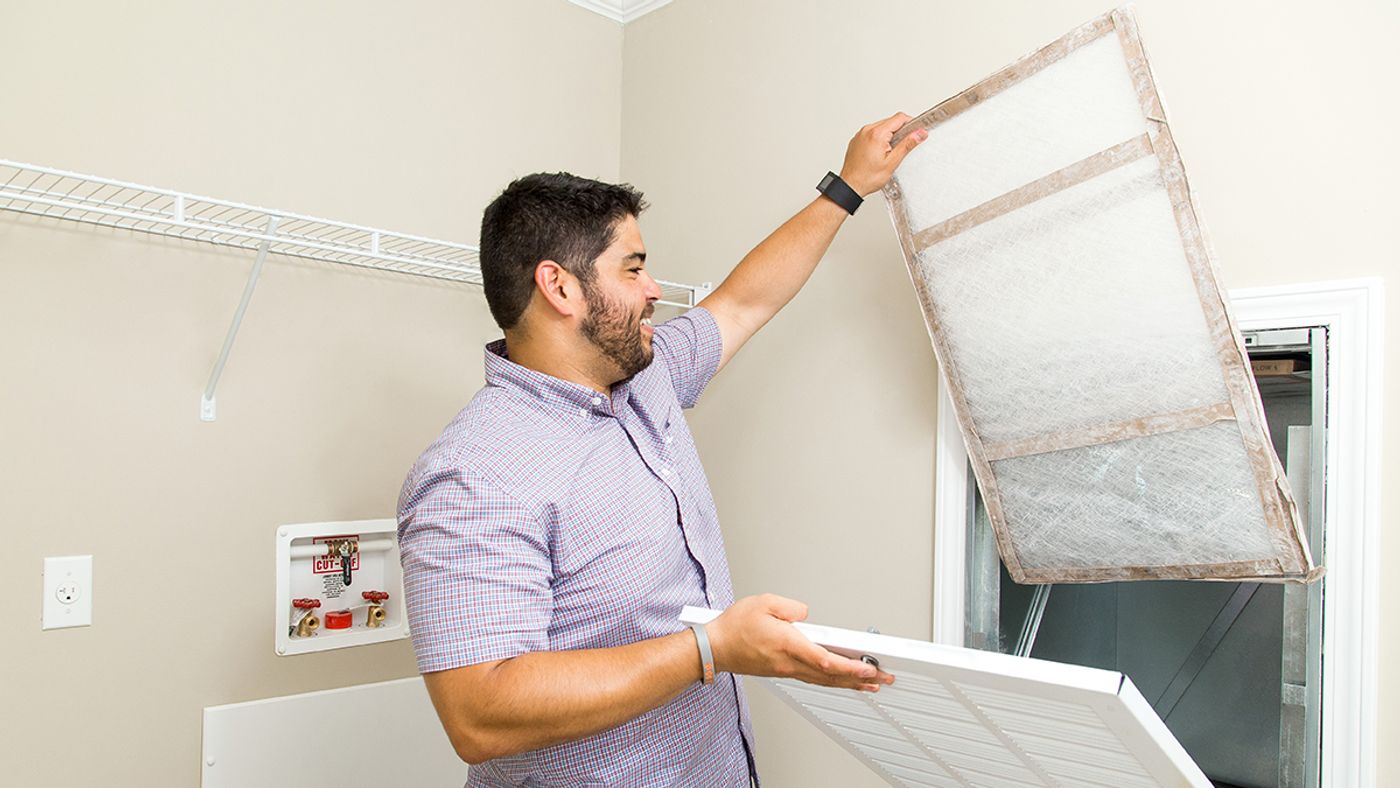
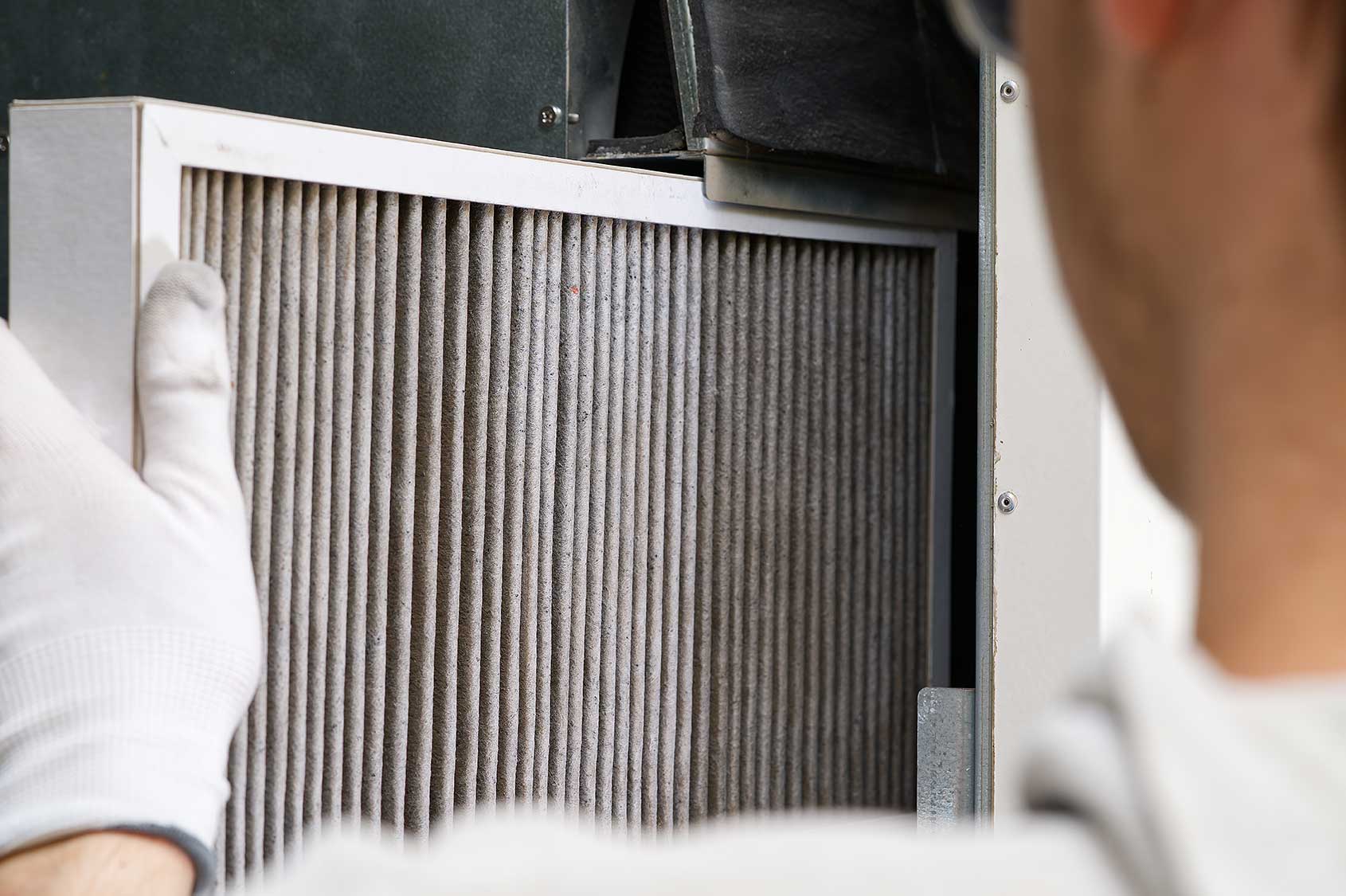
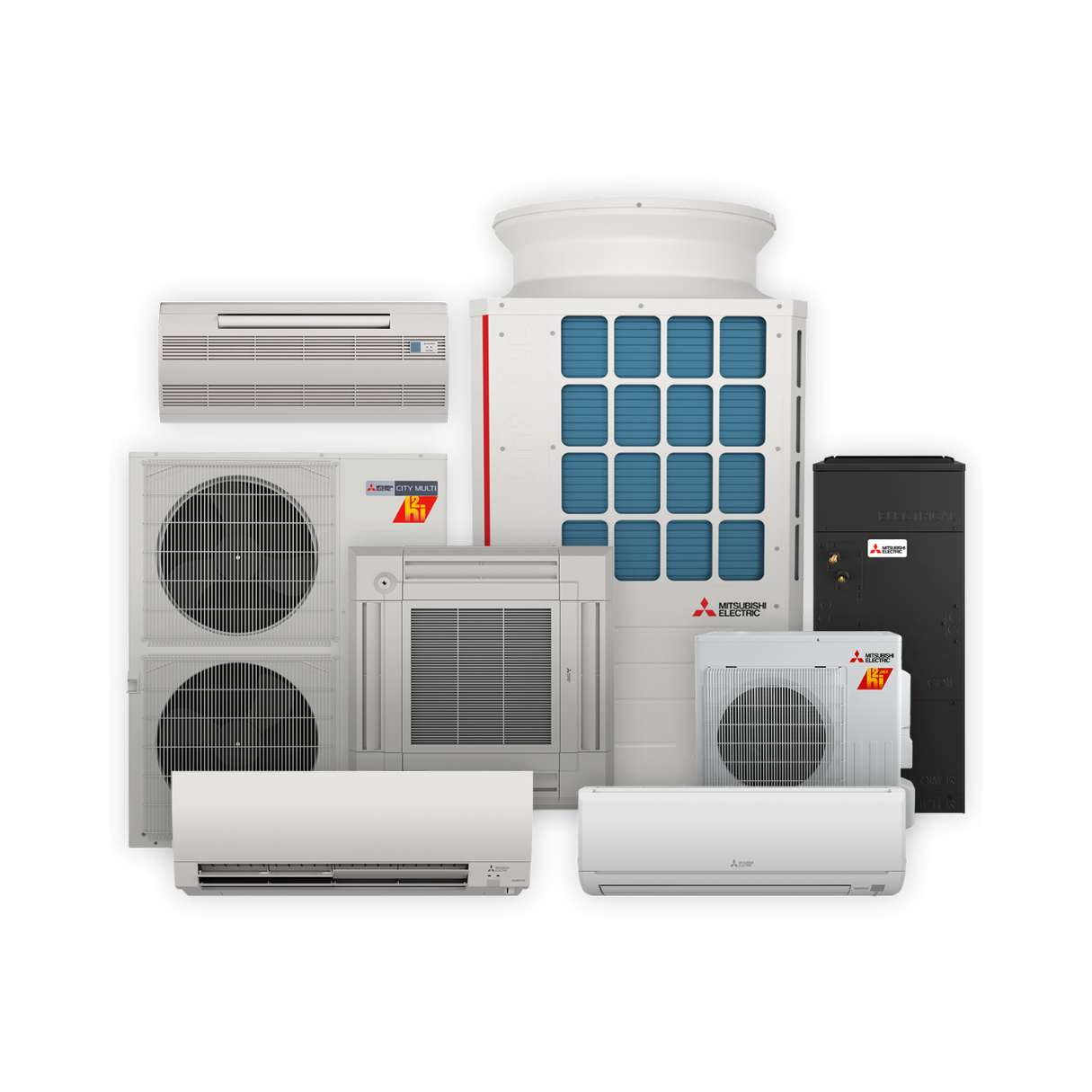
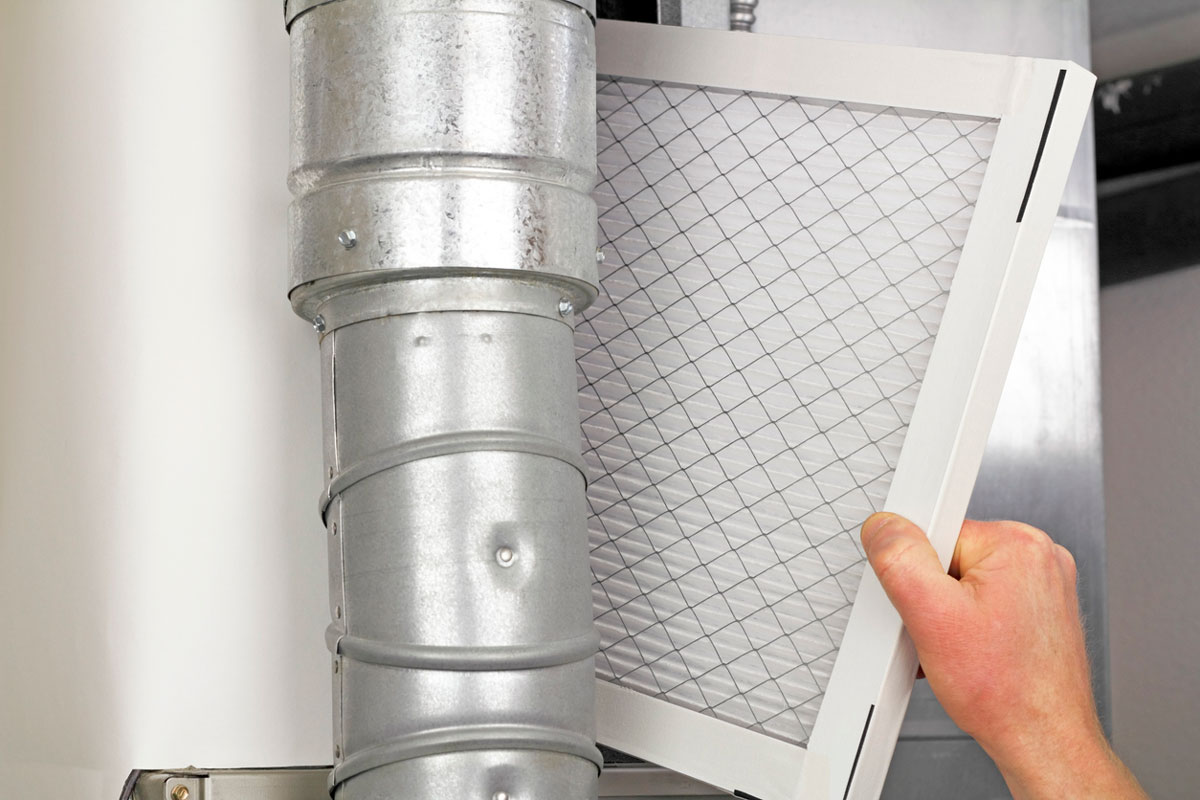
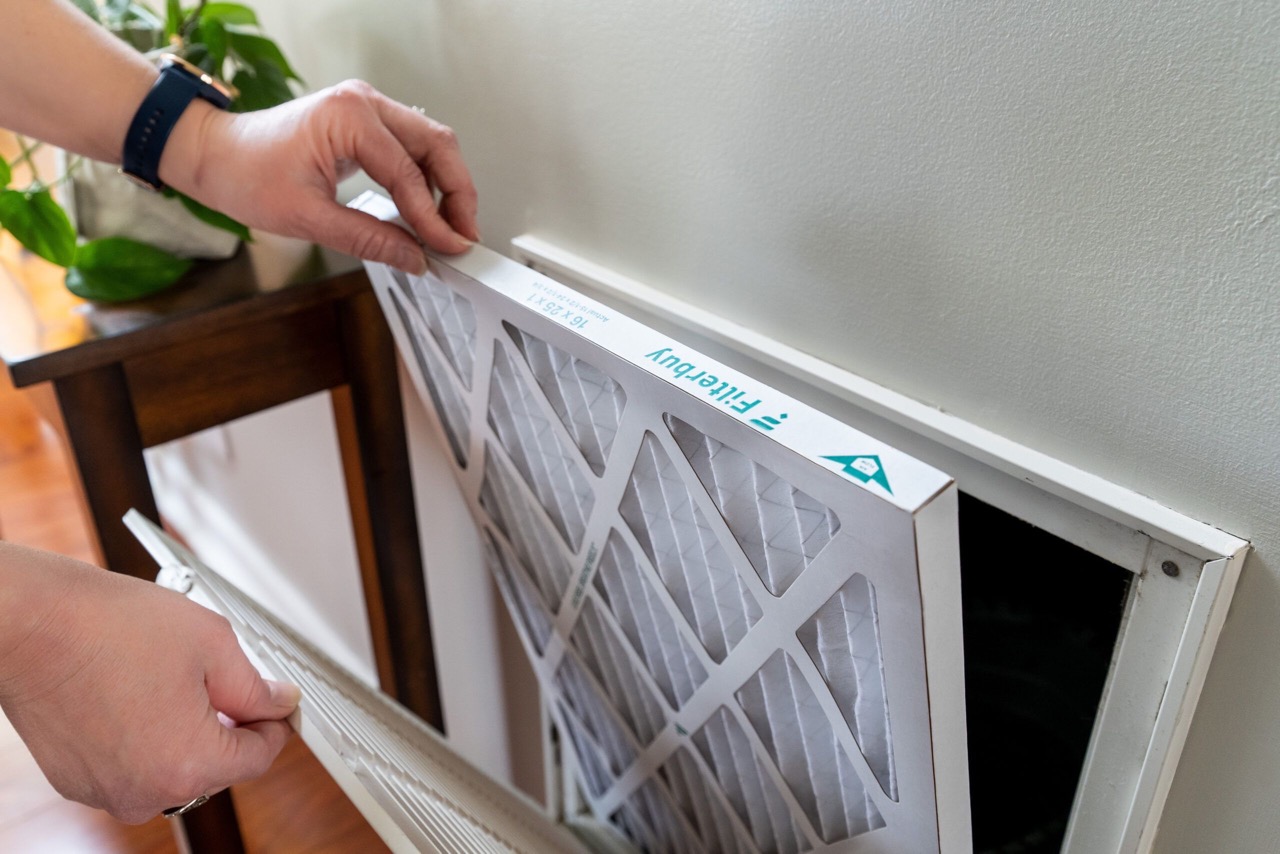
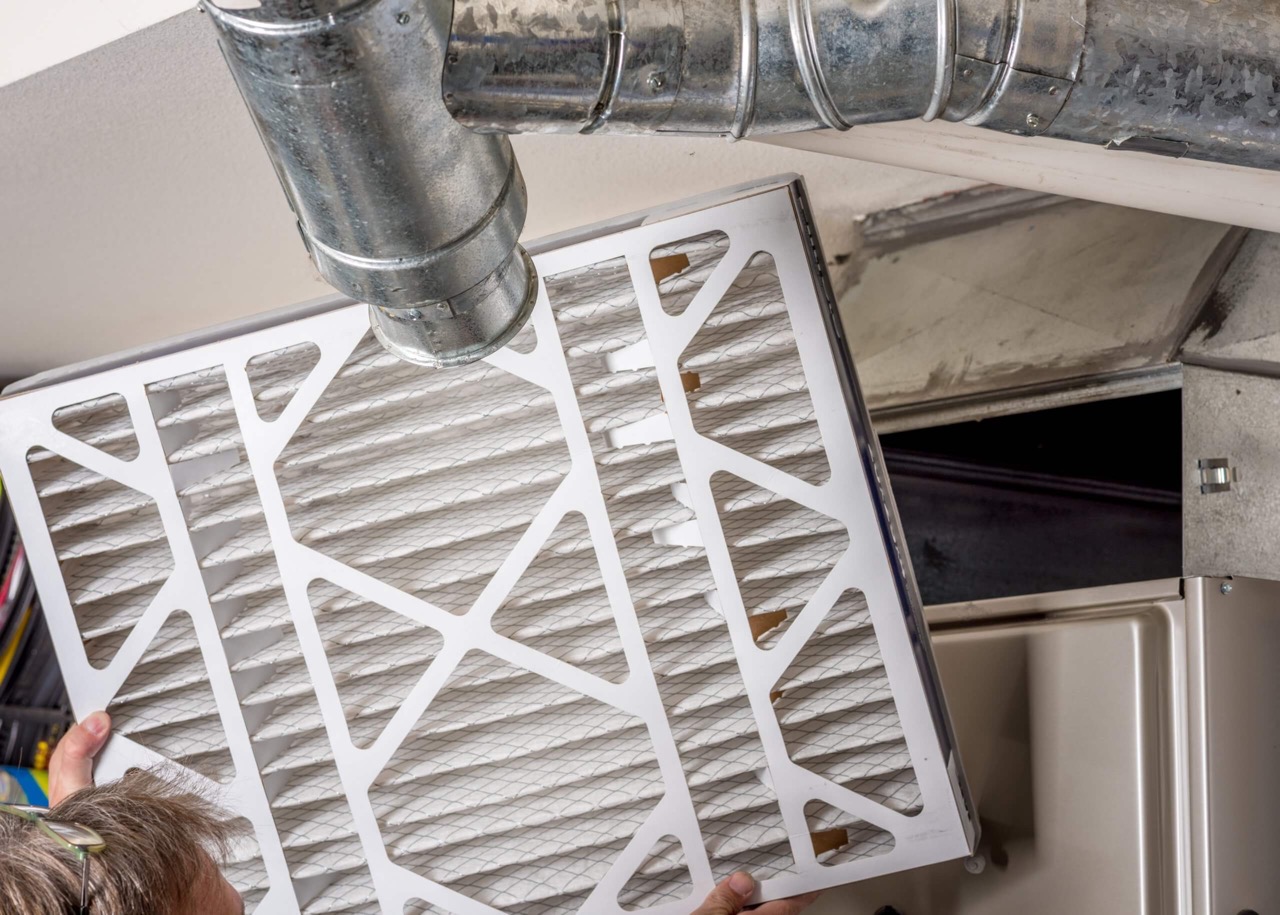
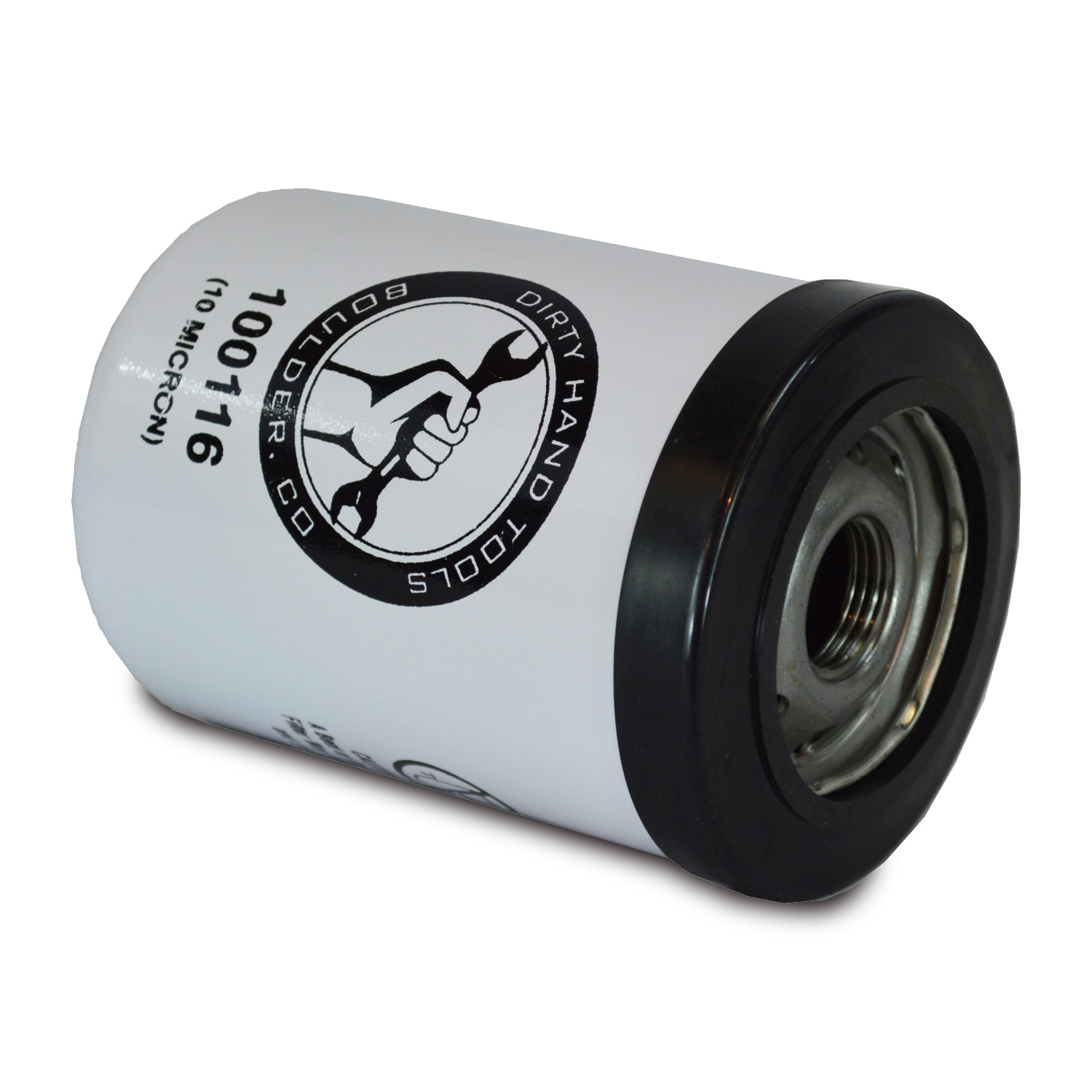
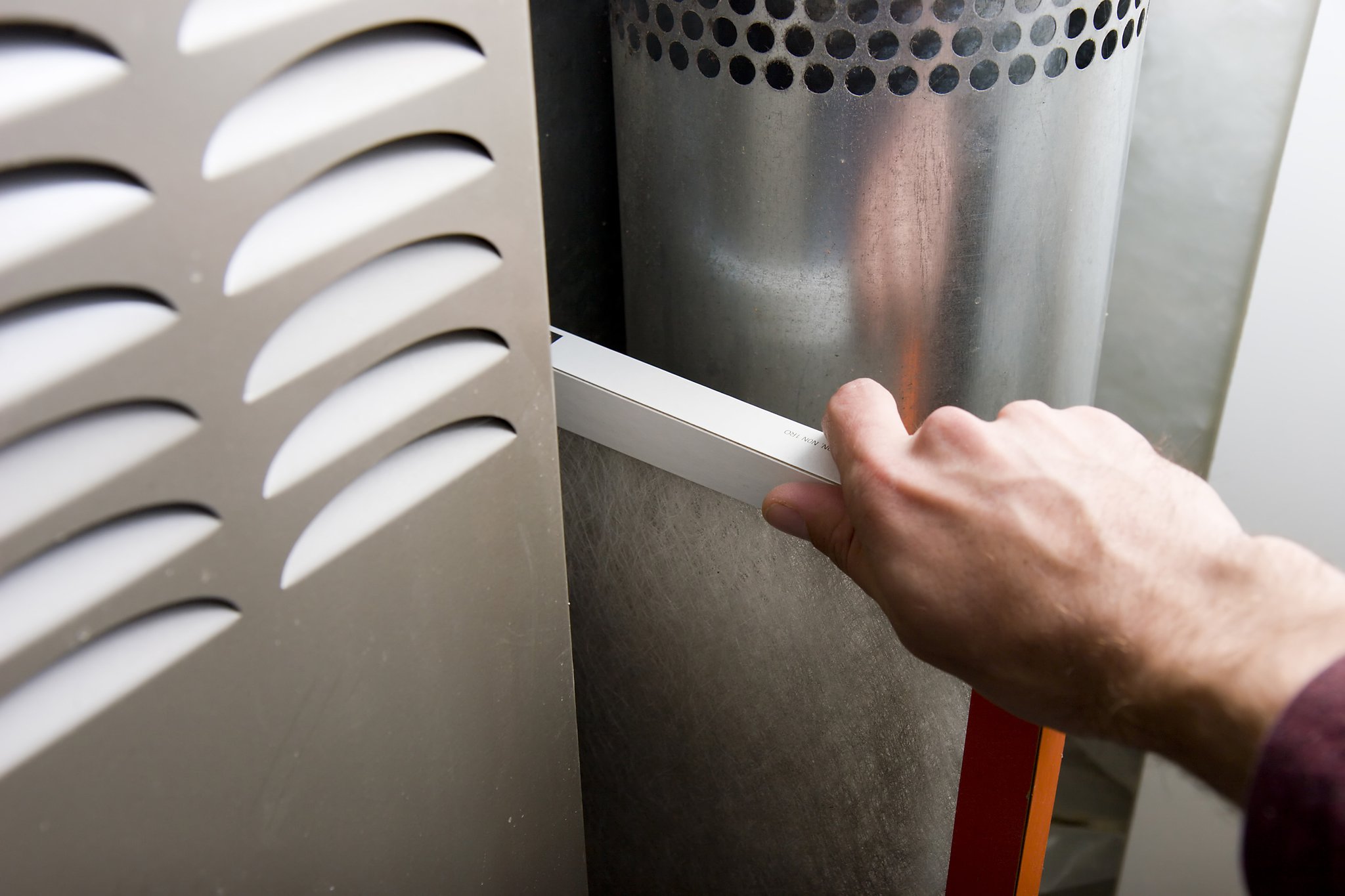
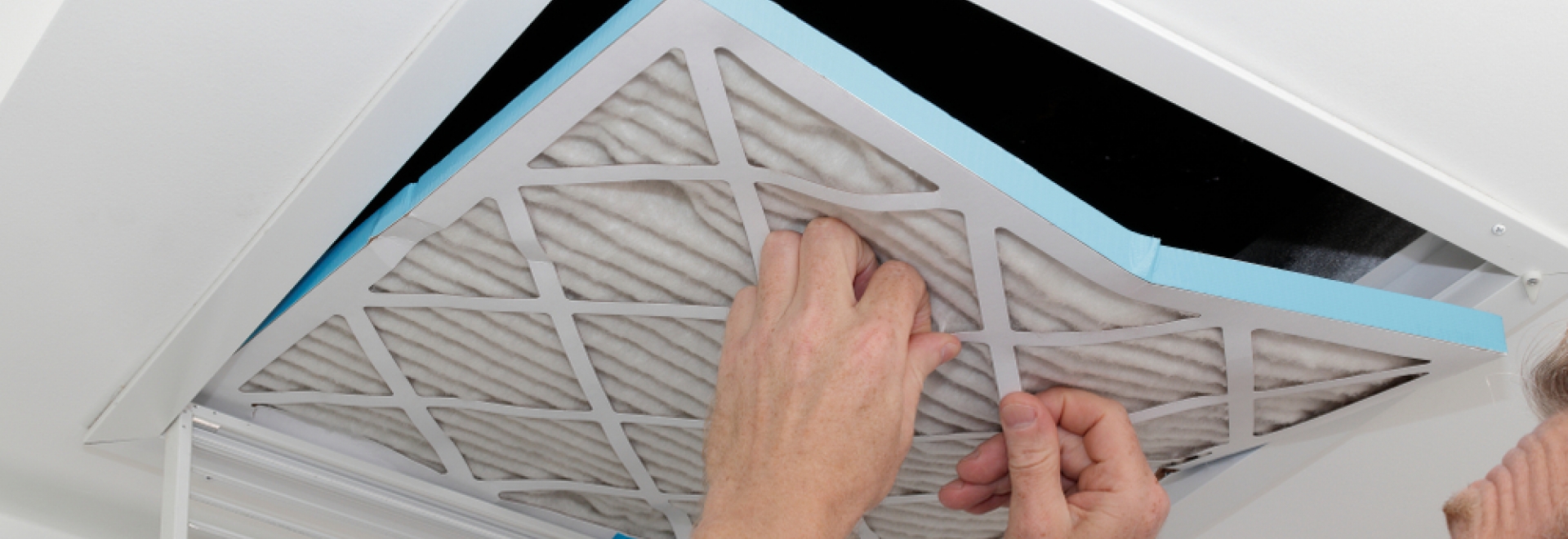
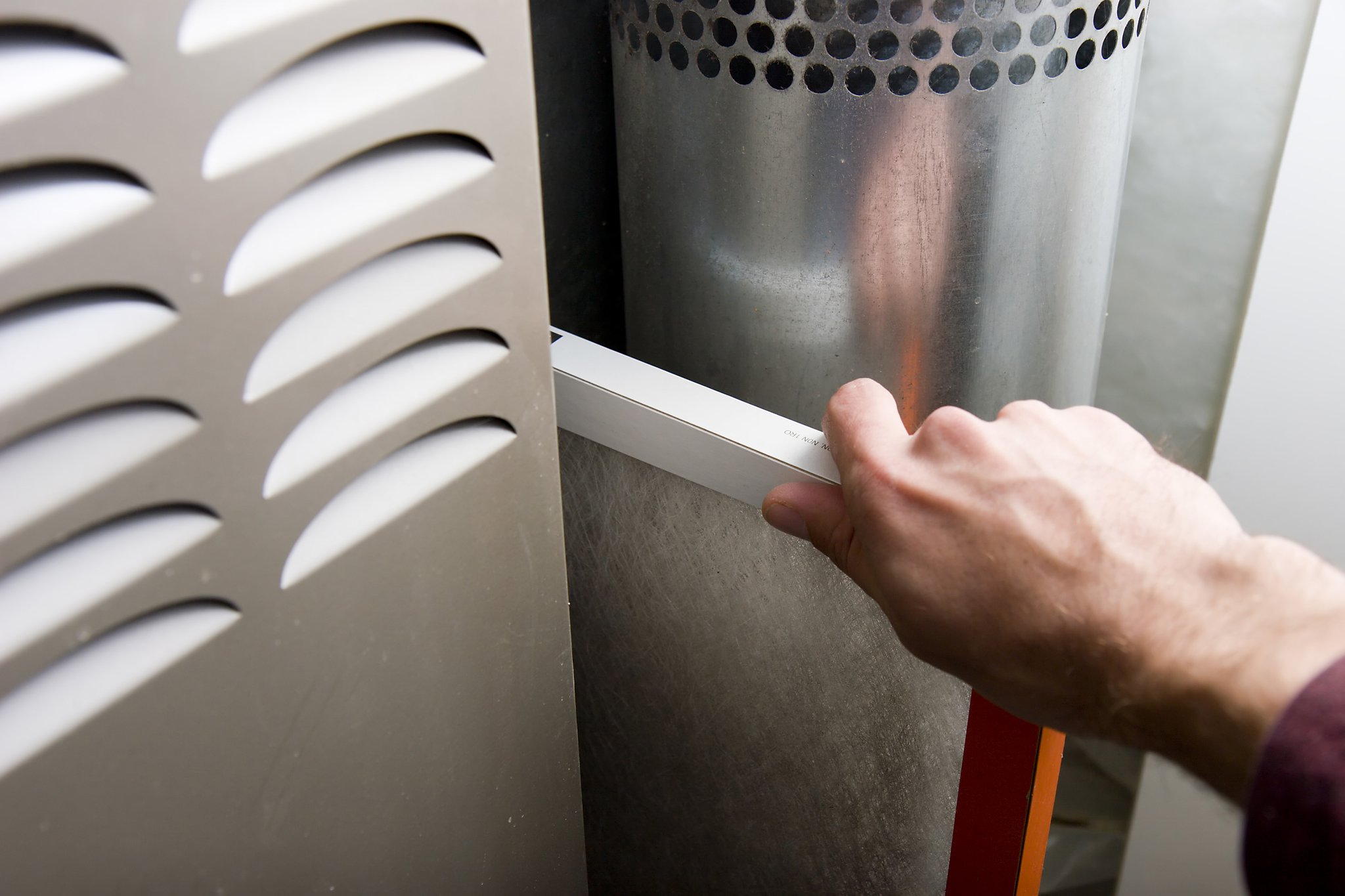
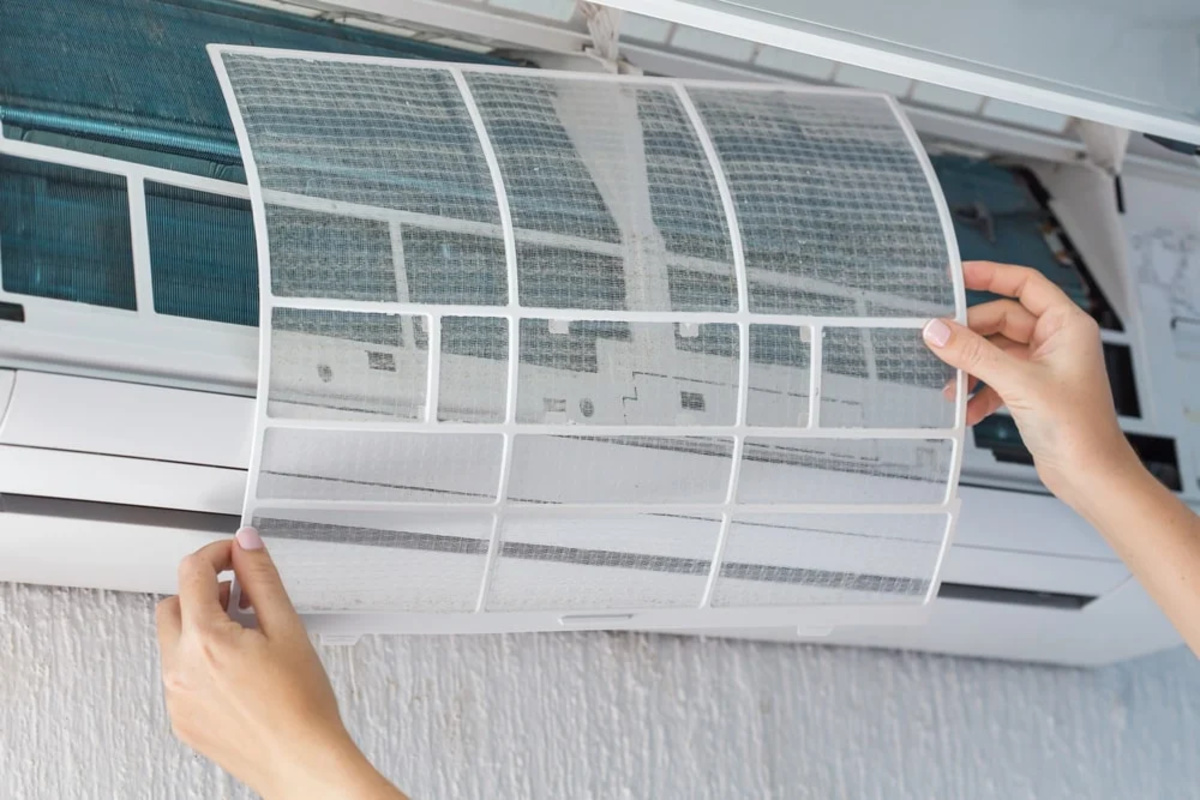
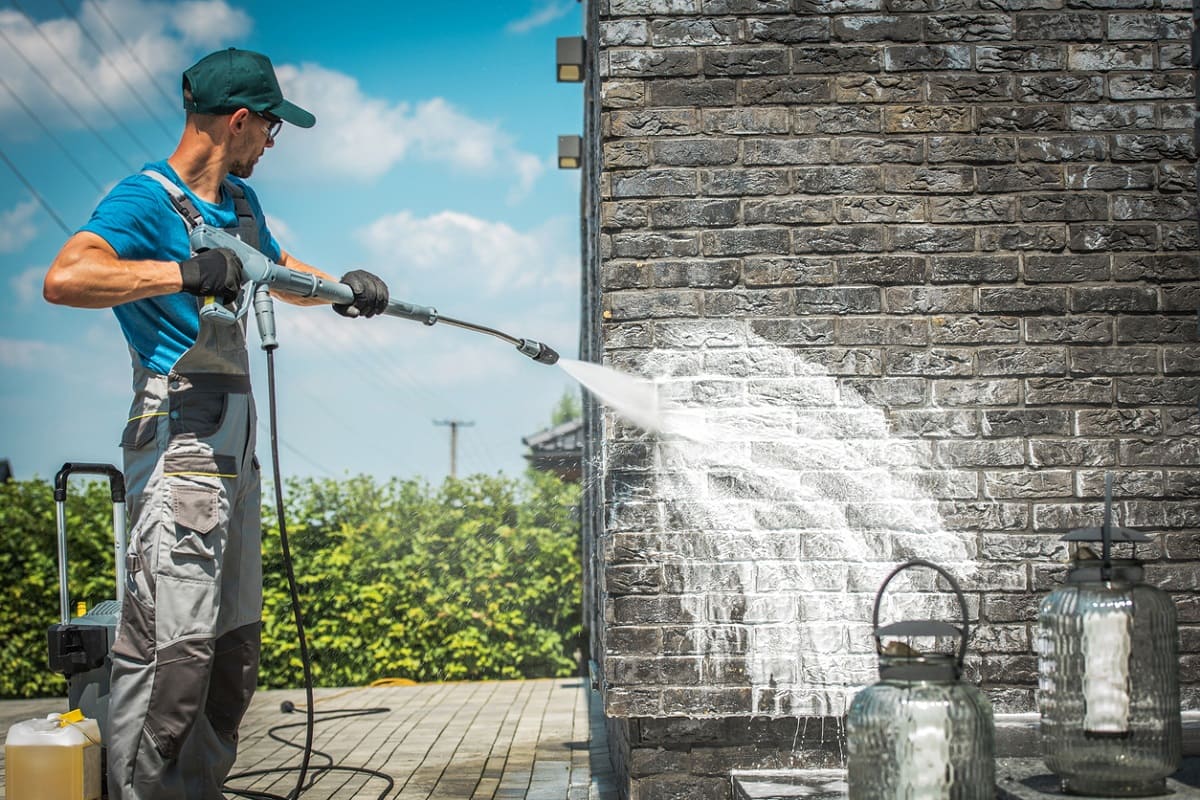

0 thoughts on “How To Tell If HVAC Filter Is Dirty”